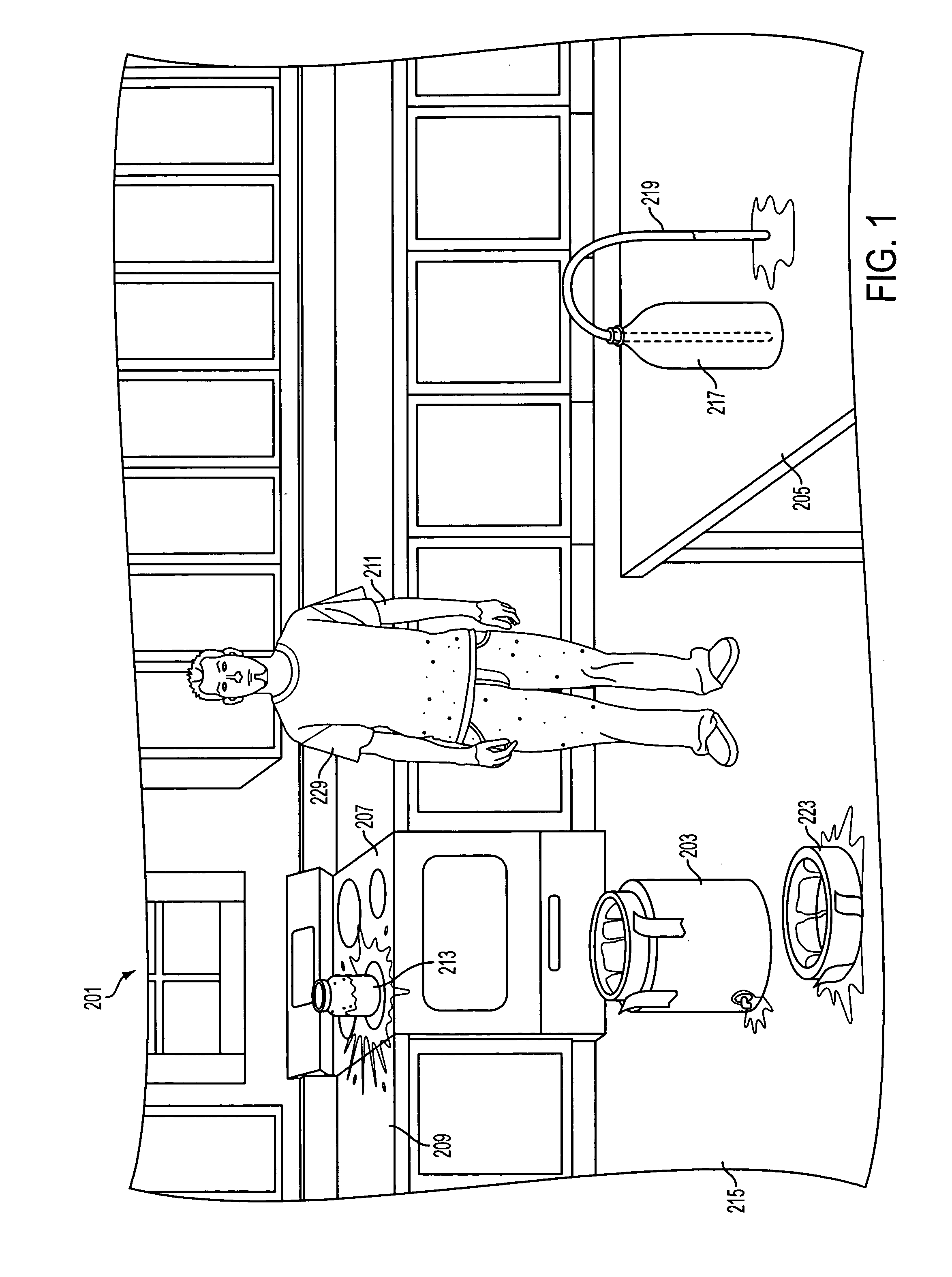Dye solutions for use in methods to detect the prior evaporation of anhydrous ammonia and the production of illict drugs
a technology of anhydrous ammonia and dye solution, which is applied in the direction of fluorescence/phosphorescence, instruments, other chemical processes, etc., can solve the problems of methamphetamine use and production, methamphetamine use also has negative toxic effects on the body, and the use of methamphetamine is an illegal activity affecting many aspects
- Summary
- Abstract
- Description
- Claims
- Application Information
AI Technical Summary
Benefits of technology
Problems solved by technology
Method used
Image
Examples
example 1
[0073]In a controlled laboratory setting, 12 microliters of the commercial product marketed as “KeyAcid™ Rhodamine WT” and manufactured by Keystone Analine Corporation of Chicago, Ill., which is a 21.2% w / w solution of rhodamine WT in water, and 300 mL of anhydrous ammonia were combined in a flask. This is approximately equivalent to 2 oz of KeyAcid™ Rhodamine WT in one ton of liquid anhydrous ammonia. The mixture was stirred until a solution formed that had a very slight yellow tint. The solvation of rhodamine WT in ammonia transformed the rhodamine WT into a nearly colorless composition. The surface of each piece of equipment used in this process, however, was visibly stained a light pink in areas exposed to the ammonia and from which the ammonia had evaporated. The solution was also purposefully put in contact with various additional equipment and materials, including metal screwdriver heads, concrete, and paper. All exposed equipment and materials were visibly stained pink upon ...
example 2
[0078]A researcher's living human skin was exposed to a small amount of a solution of rhodamine WT and was visibly stained pink. The skin was then repeatedly washed until the dye was no longer visible to the unaided human eye. The skin was then observed under irradiation by a hand-held UV light which showed the originally stained area still indicated by fluorescence. Fluorescence was still visible on the skin two weeks later when exposed to UV light after normal activity and washing by the researcher. When a more concentrated solution of the dye was used in a similar fashion, fluorescence was still visible 4–6 weeks after exposure.
example 3
[0079]Methamphetamine was generated using liquid anhydrous ammonia containing rhodamine WT as a dye in a similar manner to that discussed in Example 1. Physio-chemical nvestigation of the methamphetamine led to a finding that some dye resided on the outer surface of methamphetamine crystals. To attempt to remove the dye from the resultant methamphetamine, the crystals were washed with one of: water, acetone, toluene, petroleum ether or xylenes. In all cases either the methamphetamine and dye dissolved in the washing agent and the resultant mixture would stain objects it came into contact with, or neither the methamphetamine nor dye dissolved. The methamphetamine was recrystalized from various solutions containing dyed methamphetamine and at least one of: alcohol, toluene, xylenes and petroleum ether. The resulting recrystalizations still showed obvious staining from the dye indicating that dissolution and recrystalization did not result in removal of the dye.
PUM
| Property | Measurement | Unit |
|---|---|---|
| freezing point | aaaaa | aaaaa |
| boiling point | aaaaa | aaaaa |
| temperature | aaaaa | aaaaa |
Abstract
Description
Claims
Application Information
 Login to view more
Login to view more - R&D Engineer
- R&D Manager
- IP Professional
- Industry Leading Data Capabilities
- Powerful AI technology
- Patent DNA Extraction
Browse by: Latest US Patents, China's latest patents, Technical Efficacy Thesaurus, Application Domain, Technology Topic.
© 2024 PatSnap. All rights reserved.Legal|Privacy policy|Modern Slavery Act Transparency Statement|Sitemap



